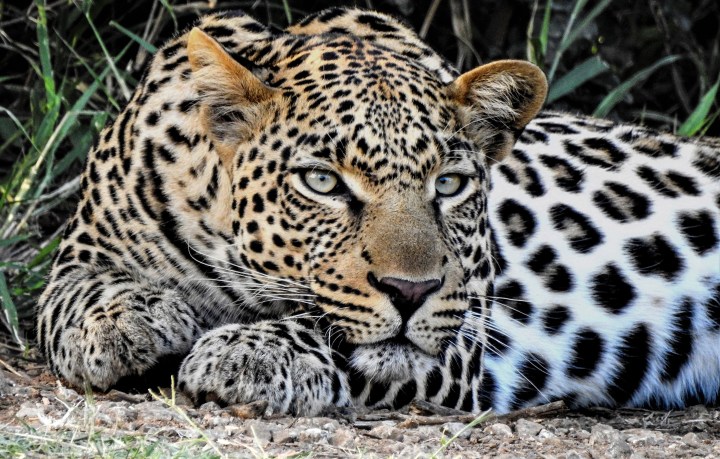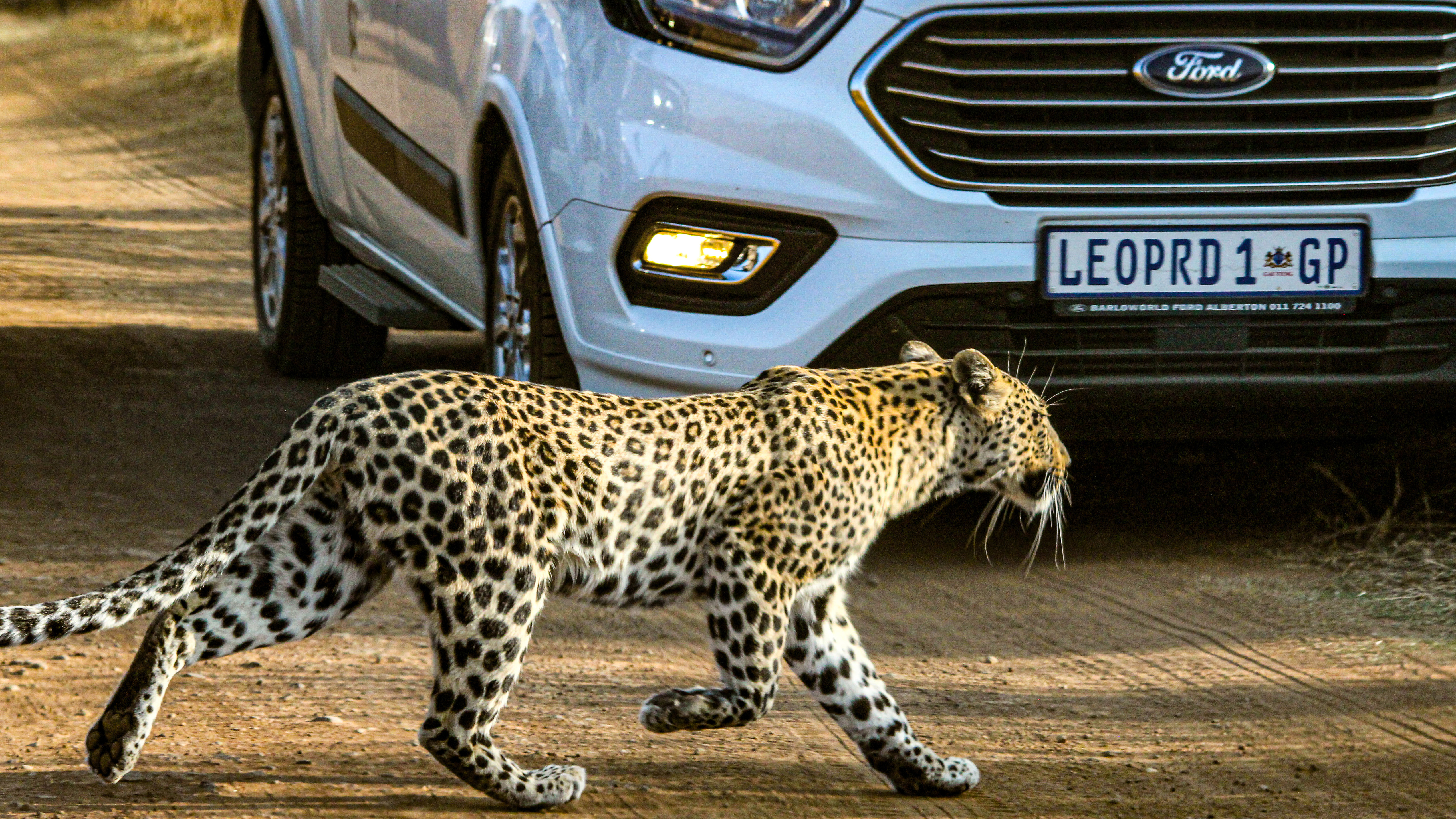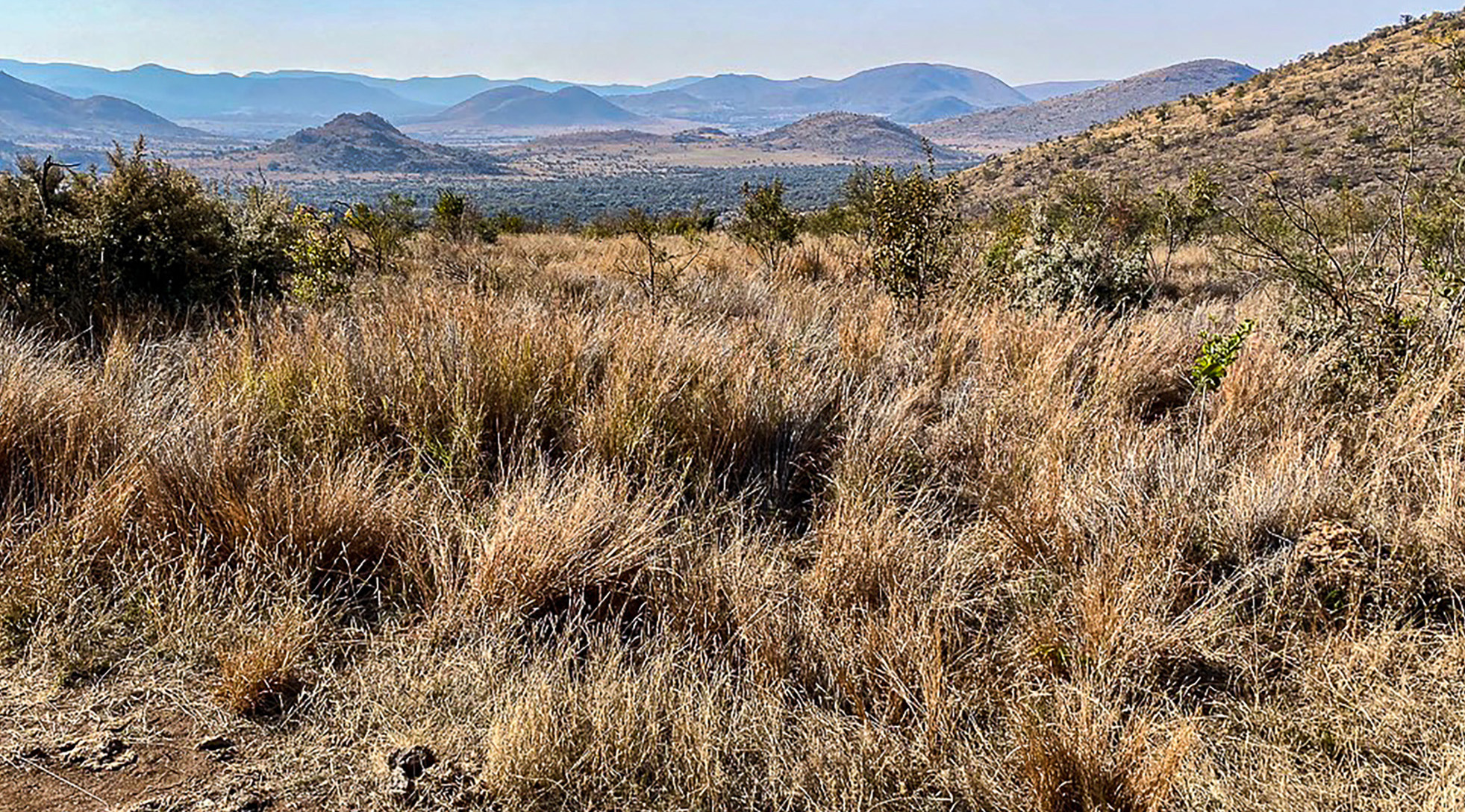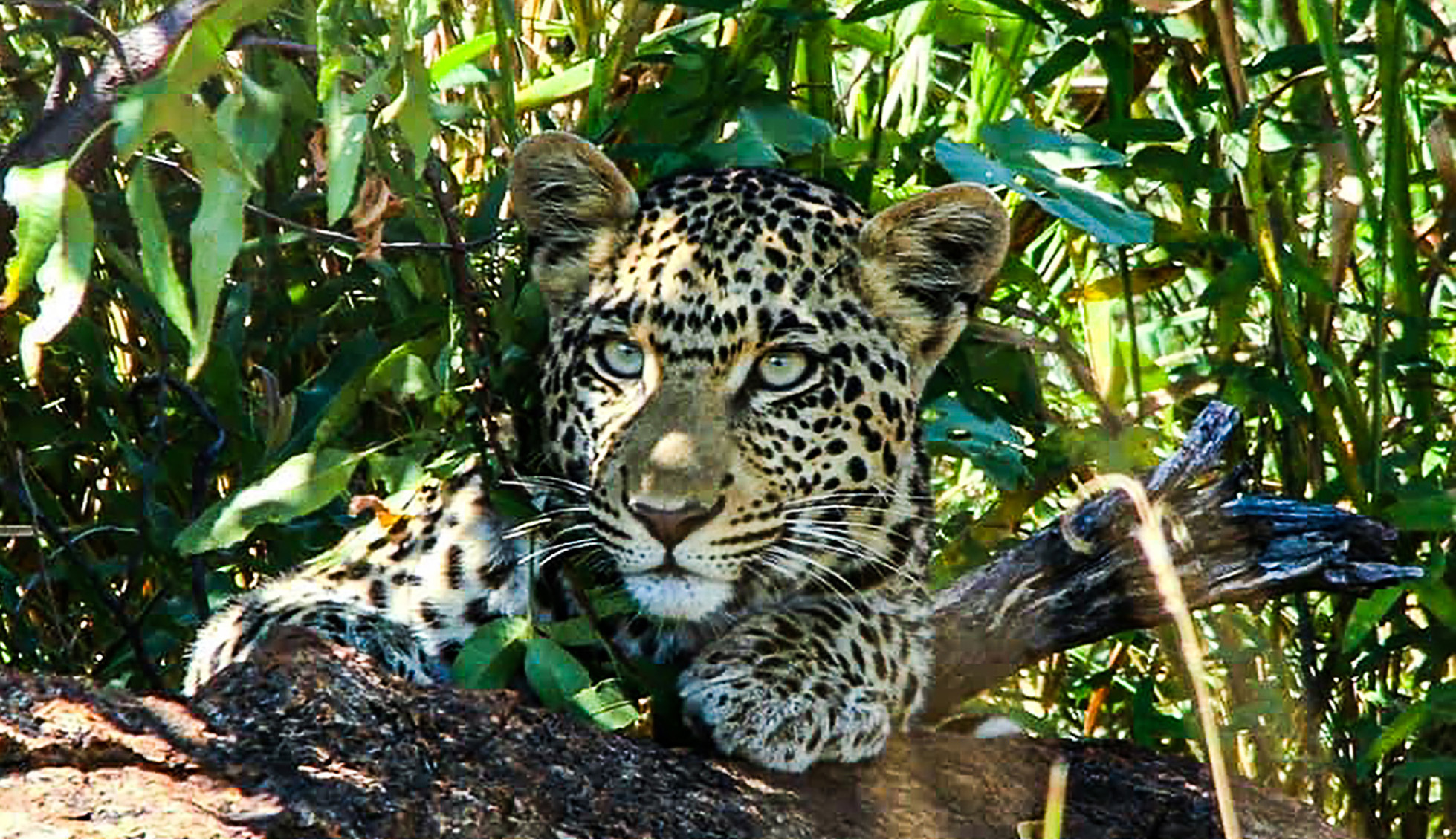BIG CAT CONSERVATION
Riveted to the spots – passionate love of leopards unites thousands in ‘phenomenal’ citizen science project

Citizen scientists are pitching in to keep track of the graceful cats in the Pilanesberg National Park after a ‘people’s project’ exploded on social media. One woman describes how a chance encounter changed her life.
Five leopard cubs were born in Pilanesberg, North West at the start of South Africa’s hard lockdown in March 2020. It was a time when South Africans were for the most part not allowed to leave their homes, when the country’s wildlife had the roads of national parks and game reserves to themselves.
Four are known to have survived to adulthood, a rare achievement in the animal kingdom, according to safari guide and wildlife photographer Debbie Fendick.
“It’s very unusual,” says Fendick, who doubles as an administrative team member of the Pilanesberg Leopard Project.
With lions, hyenas and adult male leopards likely to kill them off as future competitors, she says, leopard cubs have a survival rate of about 30% in the wild.
The Leopard Project was founded in 2015 by Heinrich Neumeyer, a guide and professional wildlife photographer with extensive knowledge of tracking and mapping the movement of leopards since 2009.

The female Kgodisa crosses the road in front of guide Debbie Fendick’s car. Encountering her and her sibling in 2013 changed Fendick’s life. (Photo: Sumari van der Merwe)
Fendick says Neumeyer wanted to create a “people’s project” in which citizens could help to collect data on the park’s leopards.
Keeping track
“Heinrich has an incredible passion and talent for finding leopards. He shares his knowledge with [social media] groups and certainly was the inspiration for my keen interest in leopards,” Fendick says.
Neumeyer, who remembers seeing his “very first leopard in the Pilanesberg National Park way back on my 10th birthday in 1994”, wants the research project to monitor:
- How many leopards roam the Pilanesberg, shedding light on the ratio between predators and prey;
- The number of males, females and cubs;
- The ages of the leopards; and
- Injured leopards, making it easier for park management and ecologists to attend to them if needed.
Phenomenal response
“The response has been phenomenal,” says Neumeyer, adding that the project has almost 8,000 active followers on social media, involved in what he describes as a “very successful and passionate citizen science project”.
He says the initiative grew far bigger than he had imagined it would, swelling the number of visitors to Pilanesberg National Park as people discovered that the park had a significant leopard population.
Read in Daily Maverick: “Twelve southern African speed cats travel 9,000km to bring extinct cheetahs back to life in India”
“Guests to the park now try to find their favourite individuals, which creates additional interest and encourages more frequent return visits,” he says.
Fendick, the third volunteer invited to join the project, had herself been one of those frequent visitors. Her involvement was the result of a chance meeting.
Visit Daily Maverick’s home page for more news, analysis and investigations
“In 2013 I came around the corner in Pilanesberg and two leopard cubs were playing in the road with their mom.”
She says the experience changed her life.
Passion fulfilled
“I used to take people out because they loved my passion for leopards, and they wanted to drive with me,” she says.
Some of her guests now call her the “crazy leopard lady”, she says.
During that encounter on the road she realised that she wanted her passion to become her future, leading her to complete a field guiding course.
The two cubs, Motsamai and Kgodisa, are now nine years old. They have been observed by Fendick and her Leopard Project colleagues for their whole lives, and the monitoring is contributing to scientific research. She says she has seen Motsamai and Kgodisa raise and lose cubs of their own.

The ancient crater that hosts the Pilanesberg National Park. (Photo: Angus Begg)
Perry Dell, of the Pilanesberg Wildlife Trust, a non-profit organisation that helps the North West Parks Board with a wide range of conservation activities, from anti-poaching to fuel supplies, says the Leopard Project has provided valuable assistance to the park, since the park itself does not conduct research.
“It’s definitely of interest to the public,” says Dell.
“The project helps with keeping track of leopard numbers and knowing which territories they are seen in.”
Read in Daily Maverick: “Challenge to leopard hunting quota proof that the DFFE should change its spots”
Neumeyer says keeping a database of the leopards identified in the park adds an additional resource that will help if any of the animals stray out of the park.
Fendick says the most exciting part of the project for her is the passion of its members: “They want to learn and provide us with feedback and data. Following leopards is a serious hobby for some people.”
She says members’ photographs have contributed to the production of an identification booklet containing “all the information gathered over more than 10 years on every leopard, both alive and presumed dead, in the park”.
Protection
Leopards, she says, need protection.
“Absolutely they do. So many leopards are caught in snares and hunted by farmers. We have to always remember we have encroached on their territory, and therefore we are the ones [who] need to practise caution and respect,” she says.
By collating data, the project finds that the “textbook version” is not always entirely correct. Fendick says “some really exciting behavioural observations” have been made.
She cites one male that was often seen by members with his cubs and their mother. “Male leopards usually move on, but this one remained involved, which is important for the survival of the cubs.”
She also says it is a fallacy that leopards are strictly nocturnal. “Some of our most incredible sightings have been in the heat of the day at midday, like the kill we saw last week.”

“I was driving along Tilodi loop and we noticed a few giraffes staring intently at the rocks. If you spend enough time in the bush you know that animal behaviour often gives away the predators we are looking for. The giraffes stared and stared without moving at all. We switched off the car and waited patiently to see what they would reveal. Turned out to be one of our beautiful lockdown babies just hiding behind a rock. I had the privilege of naming her Nandi, meaning “joyful surprise”.’ (Photo: Debbie Fendick)
She says the project’s most public contribution to the survival of the predators is found in its publications, such as the Pilanesberg Leopard Project ID Booklet and calendar sold at the Pilanesberg Wildlife Trust kiosk in Pilanesberg Centre, the proceeds of which go to the trust.
And the support from the park “in allowing the project to exist and continue our efforts is wonderful”.
Read in Daily Maverick: “End trophy hunting in South Africa, or we won’t visit your country, say tourists”
Of his love for leopards, Neumeyer says: “To me, their beauty trounces that of a lion or a cheetah. Their stealth, power, elusiveness and resilience are all attributes of a very special cat and animal.
“Sightings can be few and far between. Whenever we find [a leopard], we appreciate it more as it is such a rarity to be in their world, even for a couple of seconds.”
Fendick agrees, and heads off to Sabi Sands to guide more guests in search of her spotted lovelies. DM168
This story first appeared in our weekly Daily Maverick 168 newspaper, which is available countrywide for R25.






















 Become an Insider
Become an Insider
Well done guys. Great to read about the difference you are making. Would be great if similar projects could be started in our other parks like Kruger, Mkuze and Umfolozi.